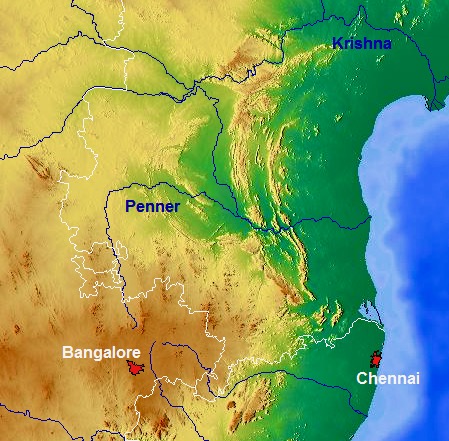The Pennar River is one of the major rivers in southern India. It originates in the Nandi Hills of Karnataka. It flows through the states of Karnataka and Andhra Pradesh before emptying into the Bay of Bengal.

Table of Contents
Origin and Course
It originates in the Nandi Hills of Karnataka state. It is formed by the confluence of the North Pennar and South Pennar rivers near Gandikota in Andhra Pradesh.
After its formation, the Pennar River flows eastward through the Deccan Plateau region. It traverses through the states of Karnataka, Andhra Pradesh, and Tamil Nadu. Along its course, the river passes through several districts, including Anantapur, Kadapa, and Kurnool in Andhra Pradesh.
Tributaries of Pennar River
It is joined by numerous tributaries along its course, including the Jayamangali, Chitravathi, Papagni, and Cheyyeru rivers.
Economic Significance of Pennar River
The River and its tributaries are harnessed for irrigation and drinking water purposes through the construction of dams and reservoirs. Some of the notable dams on the Pennar River are the Tungabhadra Dam and the Sri Sailam Dam.
The River basin supports agriculture, providing irrigation water for crops such as paddy, sugarcane, and cotton. The river also supports hydroelectric power generation through the dams constructed along its course.
"Somasila Dam is being built across the Pennar River in Andhra Pradesh"
Ecological Significance
The River basin is home to diverse flora and fauna. It supports various ecosystems, like dry deciduous forests, scrublands, and grasslands. The river and its associated wetlands provide habitat for numerous bird species and other wildlife.
Overall, the River plays a significant role in the socio-economic and ecological landscape of southern India, supporting agriculture, hydroelectric power generation, and biodiversity conservation in the region.